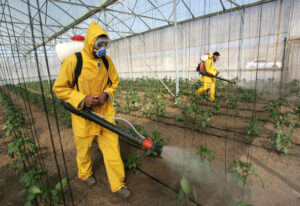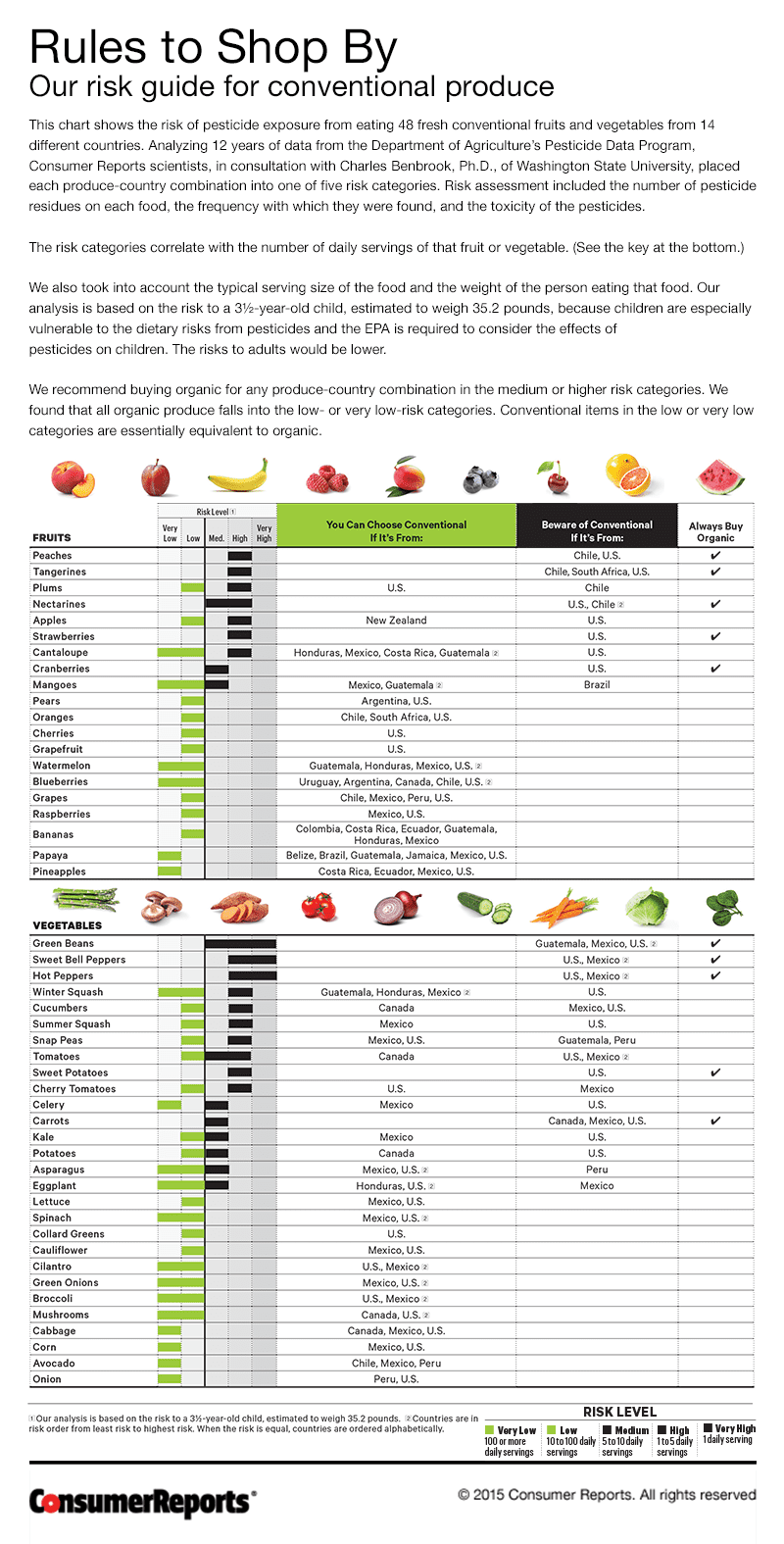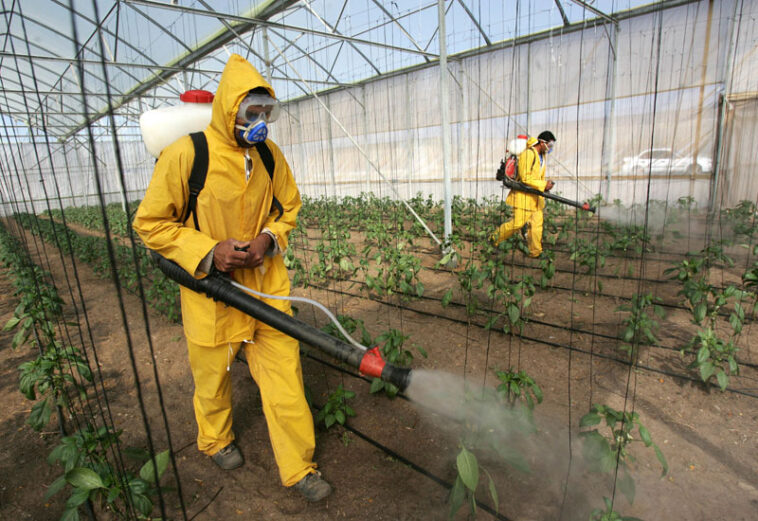Be sure to save this post or print out the chart on the bottom if you’re interested in monitoring your exposure to pesticides in produce.

Given the growing body of scientific evidence pointing to harm in pesticide use, consumers are becoming more concerned about the sources of their veggies and fruits.
The EPA defines a pesticide as, any substance or mixture of substances intended for preventing, destroying, repelling, or mitigating any pest. Pests can be insects, mice and other animals, unwanted plants (weeds), fungi, or microorganisms like bacteria and viruses. Both organic and conventional agriculture use pesticides to control insects, fungi, and dastardly weeds.
However, to be considered an organic pesticide, it has to come from a naturally occurring source and be approved by an organic certifying organization. Some argue that greater amounts of pesticide are necessary to achieve what conventional farming can do with synthetic versions. Others claim that conventional farming techniques are not sustainable and dooming our ecosystems. Either way, the organic and conventional agriculture industries are doing their best to produce the most amount of food per acre.
It’s up to regulatory agencies to insure that it’s done safely. It’s up to the consumer to decide how much trust they place in said agencies.
Genetically Modified Organisms and Pesticide Usage
The majority of current GMO crops are modified in a way that allows them to be resistant to certain pesticides. In the case of genetically modified corn and soy, farmers can use large amounts of pesticide without worry of killing their crops. Year after year, the synthetic pesticides are dumped into the soil, while some residues stay on the produce. Glyphosate, known by the commercial name Roundup, is the most commonly used agricultural pesticide in the U.S. The EPA even increased the allowed glyphosate residue levels in 2013. (I guess we weren’t getting our recommended daily allowance)
The EPA’s technical factsheet on glyphosate states that chronic long-term exposure can cause kidney damage and reproductive effects. It also states that and there is “inadequate evidence” as to whether it can cause cancer. Feel free to investigate more. Moreover, pesticides by themselves can be toxic to the human body and exposure to it must be avoided. Direct contamination of the skin via the pesticide can lead to a number of side effects. No fearmongering here……there are tons of things that cause cancer in concentrated amounts. There are also a plethora of other approved chemicals used in agriculture, and we have little data on how they affect the human body in combination. Whether it’s organic or conventional produce, wouldn’t it be nice to know what produce has the highest amount of pesticide residue?
Consumer Reports just released a handy chart showing risk levels of organic vs conventional fruits and vegetables based on pesticide residue and toxicity. While organic food production also uses pesticides, the toxicity and amount of residue are factored in.
Consumer Reports:
The chart below (download a PDF or click on the chart to expand it) shows the risk of pesticide exposure from eating 48 fresh conventional fruits and vegetables from 14 different countries. Analyzing 12 years of data from the Department of Agriculture’s Pesticide Data Program, Consumer Reports scientists, in consultation with Charles Benbrook, Ph.D., of Washington State University, placed each produce-country combination into one of five risk categories. Risk assessment included the number of pesticide residues on each food, the frequency with which they were found, and the toxicity of the pesticides. The risk categories correlate with the number of daily servings of that fruit or vegetable.We also took into account the typical serving size of the food and the weight of the person eating that food. Our analysis is based on the risk to a 3½-year-old child, estimated to weigh 35.2 pounds, because children are especially vulnerable to the dietary risks from pesticides and the EPA is required to consider the effects of pesticides on children. The risks to adults would be lower. (Download our full scientific report, “From Crop to Table.”)
We recommend buying organic for any produce-country combination in the medium or higher risk categories. We found that all organic produce falls into the low- or very low-risk categories. Conventional items in the low or very low categories are essentially equivalent to organic.Our No. 1 rule: Eat more produce! Though we believe that organic is always the best choice because it promotes sustainable agriculture, getting plenty of fruits and vegetables-even if you can’t obtain organic-takes precedence when it comes to your health.
Consumer Reports, Pesticides in Produce
Pesticide Residue In Organic Vs Conventional Produce





GIPHY App Key not set. Please check settings